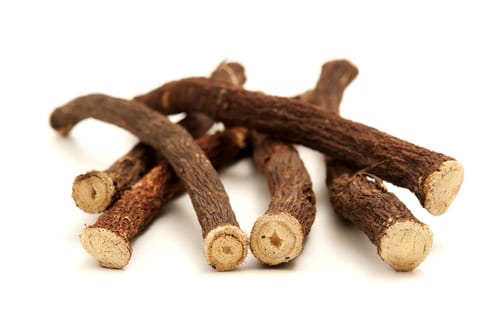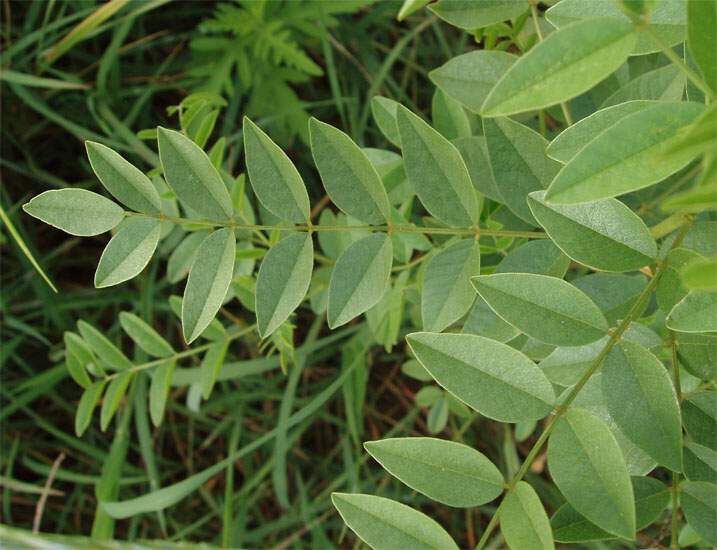Learn how to grow licorice (Mulethi) in this article if you love to grow medicinal herbs. Growing licorice and licorice plant care is easy.
The licorice (Glycyrrhiza glabra), which means sweet root in Greek is actually a legume. It is native to the Mediterranean and parts of the South-West Asia and particularly to the Indian subcontinent, where it is called ‘Mulethi’ It is a perennial herb that grows to over a meter and a half tall. It is cultivated for its roots, the plant has an extensive root system. Roots grow 3 to 4 feet (1 – 1.2 m) deep and can extend to 25 feet (10 m) in a deep, permeable soil. Growing licorice in container is also possible.
Licorice Uses
Roots of this shrub are the part that usually consumed. Licorice roots, besides having a sweet anise like flavor are also beneficial to health with medicinal properties, such as anti-inflammatory and expectorant effect. It is used in traditional Chinese, Ayurvedic and greek medicines too.
Learn more about Licorice uses
USDA Zones— 6 – 11
Difficulty— Easy
Other Names— Acide Glycyrrhizique, Acide Glycyrrhizinique, Alcacuz, Alcazuz, Bois Doux, Bois Sucré, Can Cao, Chinese Licorice, Deglycyrrhized Licorice, Gan Cao, Gan Zao, Glabra, Glycyrrhiza, Glycyrrhiza glabra, Glycyrrhiza glabra typica, Glycyrrhiza glabra violacea, Glycyrrhiza glabra glandulifera, Glycyrrhiza Radix, Glycyrrhiza uralensis, Glycyrrhizae, Glycyrrhizic Acid, Glycyrrhizinic Acid, Isoflavone, Jethi-Madh, Kanzo, Lakritze, Licorice Root, Liquiritiae Radix, Liquirizia, Mulathi, Mulethi, Orozuz, Phytoestrogen, Phyto-œstrogène, Racine de Réglisse, Racine Douce, Radix Glycyrrhizae, Régalissse, Regaliz, Reglisse, Réglisse, Réglisse Déglycyrrhisée, Réglisse Espagnole, Réglisse Russe, Regliz, Russian Licorice, Spanish Licorice, Subholz, Sussholz, Sweet Root, Yashtimadhu, Yashti-Madhu, Yashti-Madhuka, Zhi Gan Cao, liquorice.
How to Grow Licorice
Propagation
Propagating licorice is easy. It can be propagated from cuttings, division or seeds.
Growing Licorice from seeds
Soak the seeds for at least 24 hours in lukewarm water and then sow seeds in seed starting mix, which you can make yourself from these seed mix recipes. Sow the seeds at a depth of 1/2 inch. Cover the seeds with soil and keep it evenly moist until the seeds germinate. Germination occurs within two weeks. Optimum germination ranges around 68 F (20 C). Leave space of 2 feet between each plant.
Also Read: 5 Seed Germination Tips
Growing Licorice from Divison
Divide the licorice plant in spring or fall. Every division must have about one growth bud. If are dividing the plant in the fall (autumn), divisions must be replanted immediately or you can also store them in clamps for spring planting.
Planting
Licorice should be planted in the spring or summer. In warm subtropical or tropical climate growing licorice is possible year around except peak summer.
How to Grow Licorice on the Ground
Plant licorice on the ground in any land loosened deep, well-draining soil, devoid of stones.
Dig a pit that is 60 cm wide and 50 cm deep and then backfill it with the soil. If the soil is clay rich lighten it by adding compost and sand.
How to Grow Licorice in Pot
Choose a large pot (at least 20 cm) of a light color so that the temperature does not rise too much for the roots. Make a mixture of 1 parts sand 1 part compost and 1 part loam. In colder zones keep the pot indoors during winter.
Requirements for Growing Licorice
Position
This shrub needs to be in a location that is sunny to grow properly but if you’re growing licorice in tropics, plant it in on a location that receives shade in the afternoon.
Soil
A soil that is light and rich in humus facilitates the harvesting of the roots and maintains moisture. It prefers slightly sandy soil that is well draining but retains moisture with neutral to slightly alkaline pH levels.
Watering
Growing licorice requires regular and abundant watering during the growing period. Regular and deep watering is required to keep the soil slightly moist all the time. In winter, watering should be reduced.
Licorice Plant Care
Licorice plant care is simple, you just need to be careful about a few basic needs. This herbaceous perennial is mildly frost tolerant can bear temperature down to 5 F (-15 C)
Mulching
Mulch is required to retain the moisture in the soil.
Fertilizer
Licorice doesn’t need fertilizer. Although, if the soil is poor, mix compost at the time of planting or mulch around the base of plant with compost.
Temperature
It prefers average temperature around 60 – 85 F (15 to 30 C). Frost, high winds or too warm temperature can damage the plant.
Pests and Diseases
It usually remains pests and diseases free. Spider mites may invade the foliage, particularly in dry summers. Spraying the foliage with water helps to prevent them. Powdery mildew, slugs, and caterpillars can be a problem too.
Harvesting Licorice
Licorice roots are ready for harvest after two years of planting. Harvest the plant in fall. Extract the horizontal roots with a sharp spade and replant the plant so that it will regrow again. Preserve the main roots so as not to damage the plant.
Storage
Once dried, the licorice roots can be kept for several months.
Companion Plants for Licorice
Good companions — Marjoram, rosemary, and marigold.
Bad companions — Garlic, broccoli, cabbage, cauliflower, onion and leek.




very informativ page.
I will be very thankful 2 ur
Very interesting . thanks for the info
Very useful, I read about mile thi 2st time. Very interesting. I ll grow in my garden.
Hi, can you please post a picture of how licorice seeds look like?
In your growing licorice from division, it was stated “divisions must be replanted immediately or you can also store them in clamps for spring planting.” What is a clamp?
Where should i get liquorice seeds
Contacts in India